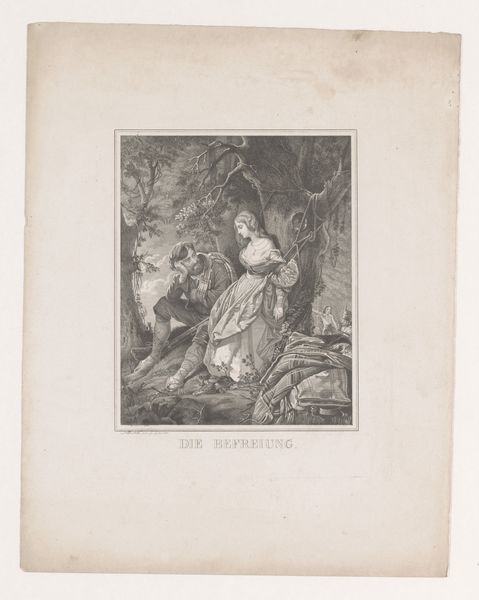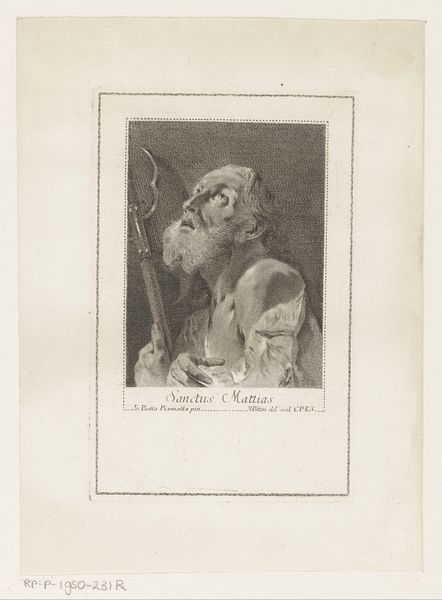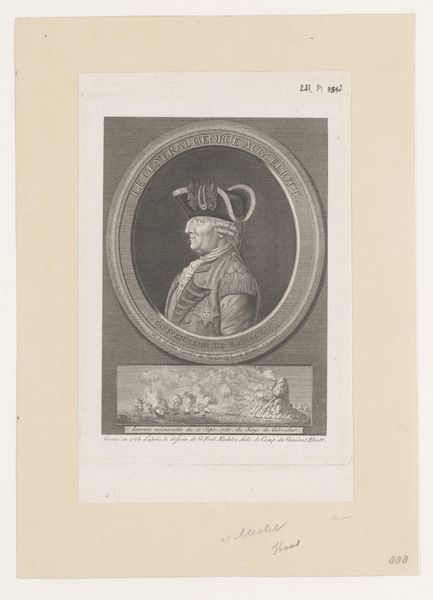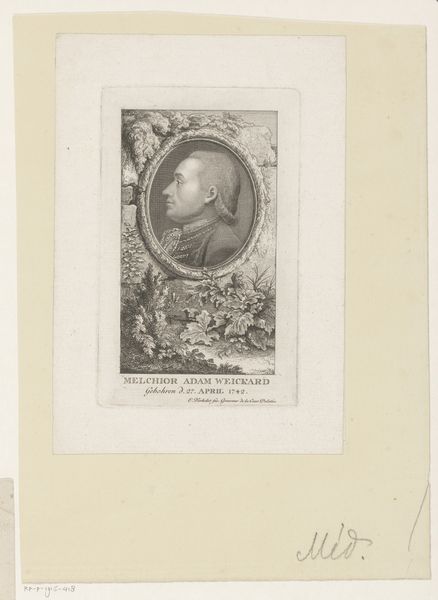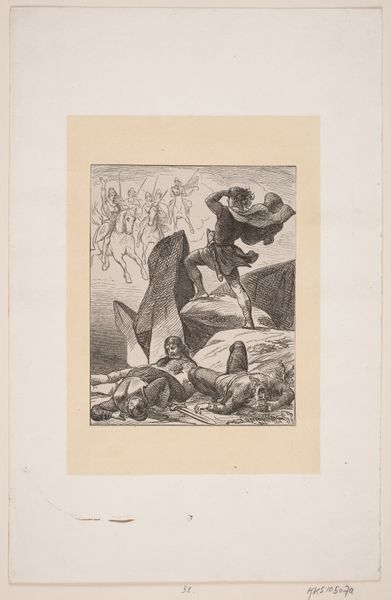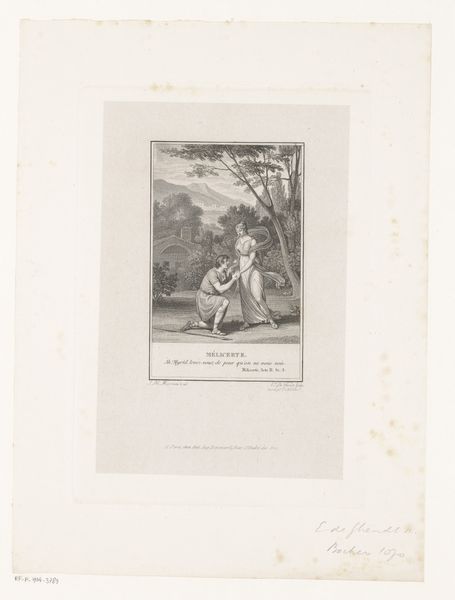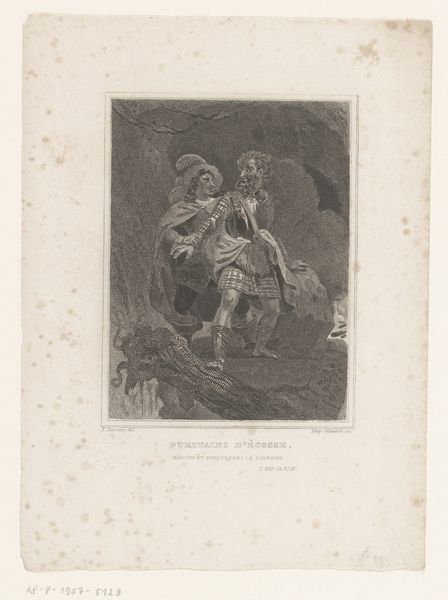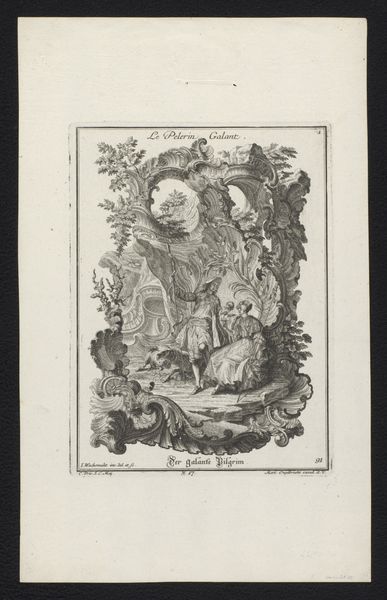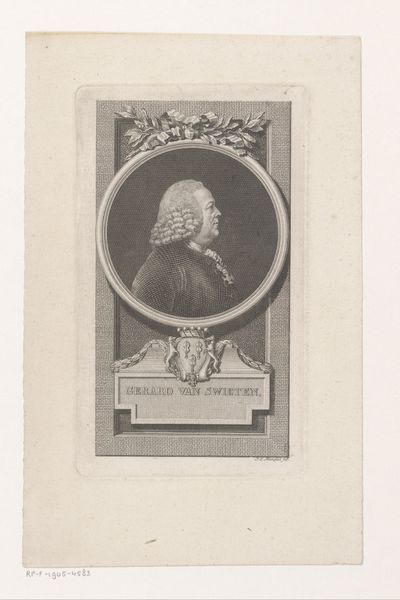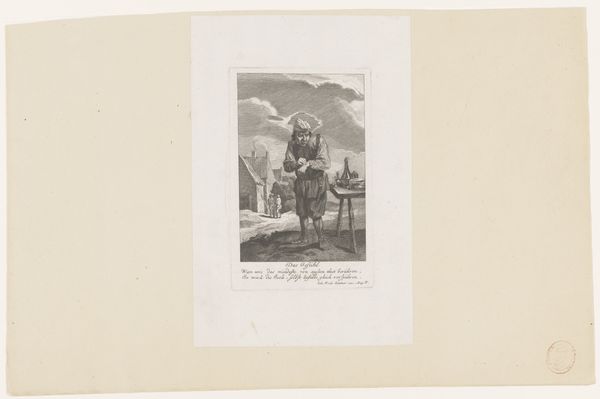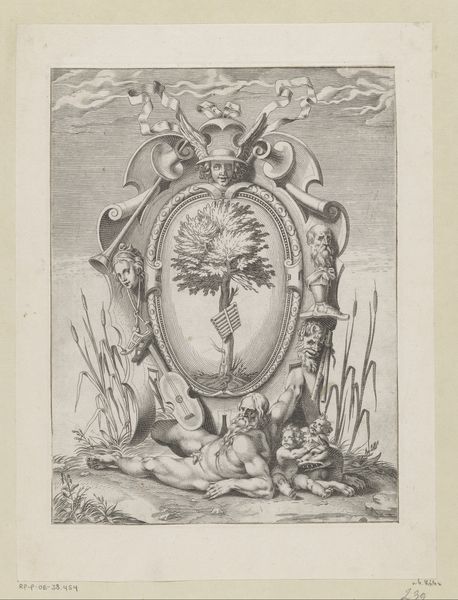
print, engraving
#
portrait
#
neoclacissism
# print
#
history-painting
#
engraving
Dimensions: height 162 mm, width 93 mm
Copyright: Rijks Museum: Open Domain
Friedrich Grögory created this print of Maximilian Julius Leopold von Braunschweig-Wolfenbüttel using etching and engraving techniques, but the exact date is unknown. This portrait exemplifies the visual language used to convey power and status in late 18th-century Europe. Encircling Leopold's profile is the inscription 'Leopold der Menschenfreund,’ literally ‘Leopold the Philanthropist,’ suggesting his benevolence. The crown and drapery above, along with the laurel wreath, helmet, and arm emerging from the clouds holding a sword, are all visual cues indicating nobility, victory, and divine endorsement. Produced in an era defined by rigid social hierarchies, art like this served to reinforce the established order. Understanding such imagery requires us to look at the cultural and political context of its creation. Who was this man? What role did he play in society? Archival materials such as letters, diaries, and official documents can help us understand better the social function of this kind of representation.
Comments
No comments
Be the first to comment and join the conversation on the ultimate creative platform.
